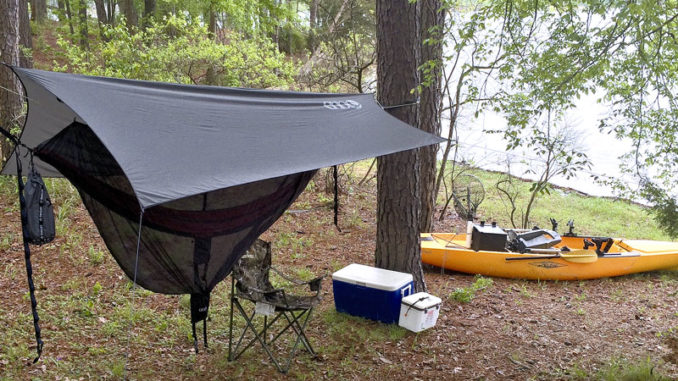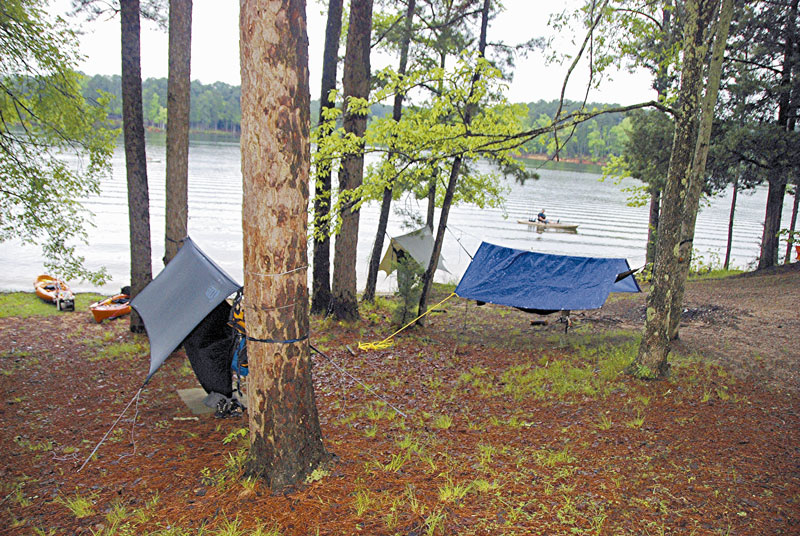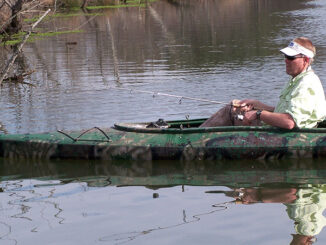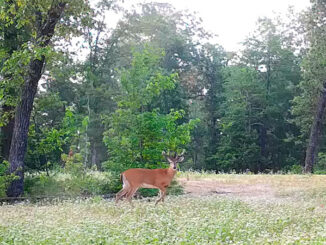
New equipment makes overnighting in a paddle craft more comfortable
Camping is one of the most “summer” activities in which a sportsman can participate. Few outdoor activities can compare with sleeping under the stars, listening to the night sounds of nature around you.
Camping, however, means different things to different people. Sleeping in a portable trailer, a pop-up or a recreational vehicle with all the modern conveniences of home on wheels meets the definition. Pitching a tent in a campground with water and electrical connections next to a pickup truck that’s loaded with gear is also considered camping. Last, there’s the minimalist who carries everything needed in just a backpack. The latter may seem like survival training. But it’s still camping.
Wherever you fall on the camping scale, taking along a kayak may range from an additional outdoor activity to your sole means of transportation for the duration of the outing.
For kayak anglers who are interested in turning a fishing trip into a weekend event, spending a night or two out is a great way to log a bunch of fishing time and enjoy yourself.
Many kayak-fishing clubs plan overnight events that include tent camping. If this sort of outing is your goal, consider these things when planning your trip to help make it more enjoyable. Will you transport everything you’ll need in the kayak from the launch to a remote campsite? Or will you need to store everything in the boat during the trip? Or will you have room in a vehicle to store gear?
Food and Water
One person should be able to survive for two to three days with food and water that will fit in a 25- to 36-quart cooler. That size is manageable in a kayak if you can transport them to a base camp or keep it in the truck while you go fishing. If you plan to keep that much in a cooler in the boat for the whole trip, you might want to opt for freeze-dried foods and MREs. These are designed for backpack camping. And they save space for transporting water.
If transporting water is an issue, the backpack-camping market has a fairly large selection of portable water-filtration systems that will fit in with your gear. Unfortunately, the systems only filter out microorganisms that can harm you. But they do little to alter the water’s taste.
A good tip might be to obtain a flat plastic or collapsible water container. A flat container can be stored under your kayak seat or in your tank well without taking up too much space. A collapsible water container can be stored inside a storage hatch. There, it will mold to the available space.
Clothing
Many outdoorsmen prefer camping during the summer because it doesn’t require a lot of clothing. And clothing that gets wet can be hung up to dry. Minimalists can easily pack three days of clothing in a dry bag. One set is for wearing, one set to dry, and a backup.
Protection from the cold may not be an issue. But protection from the sun and insects definitely is. So make sure your clothing choices include sun-proof and bug-proof selections.
Shelter
The current trend in hammock-style tents has gained popularity with the backpack and kayak set. That’s because a whole tent can be stored in a quart-sized bag. All you need is a couple of stout trees the correct distance apart.
Power
Unless you’re staying in a campground that offers electrical hookups — and most do — you might want to consider how to obtain power to charge or recharge batteries. Lightweight, sealed-lead acid batteries are giving way to lithium-ion batteries. These offer a better power source to operate electronics, recharge cell phones and other small electronic batteries. You may also consider packing along a solar-charging station or lightweight generator if you have the space.
 Accommodations on the go
Accommodations on the go
As blueways and multiple-day paddle trails become more popular, the overnight river float has also grown in popularity. For kayak anglers, a river float typically means putting in at one location, fishing through the journey, stopping somewhere along the way to spend one or more nights, then taking out further downstream. At dusk, hammock-tent cities pop up on islands or inside river banks. And they vanish without a trace the next morning.
Many outdoorsmen are fans of both kayak-fishing and primitive camping. Put the two together, and you can go places many people have never seen, much less fished.
The appeal of a hammock tent is knowing where and how you’re going to sleep. When you plan on camping in a ground tent, you don’t know if the ground wherever you end up is going to be level, rocky, rutty. You don’t even know if it will be dry.
With the hammock tent, knowing you’re going to find a level, comfortable place to sleep is as easy as locating two trees or sturdy branches the proper distance apart. Knowing you’re going to be dry and level means you’re going to be comfortable.
Several manufacturers have developed products for the hammock-tent market. One of the most popular in the Carolinas, is ENO — Eagle Nest Outfitters — an Asheville, N.C.-based manufacturer. ENO makes their hammock tents from lightweight, yet extremely strong, parachute material. Hammock systems are available with tree straps and rigging that allow for quick and easy set-up and take-down with no impact to the tree.






Be the first to comment